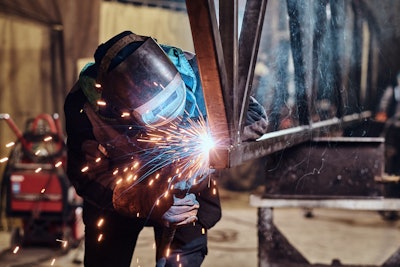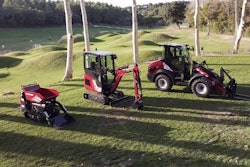
Safety is the number one thing to consider when participating in any type of skilled trade or construction job. Welding is one of those trades that must consider safety first and foremost.
While there are lots of different welding PPE out there, there are two common types of helmets that you can wear to keep you safe on the job. Depending on the style of welding work you are doing, you might find one kind is much more suitable than another. Each welding job is different and has different needs when it comes to helmets and protection.
That being said, there are a few things to consider when deciding on the best welding helmet for your job.
Types of Welding Helmets
There are about six variants when it comes to welding helmets. Many factors make welding dangerous and depending on the kind of welding you will be doing, you may need more protection or less protection. While there are six variants, there are two main types. Those two types include passive and auto-darkening helmets.
Passive Helmet
A passive welding helmet has a lens that has a dark tint set at a fixed shade. This fixed shade is usually a #10 shade. It is the most basic version of welding helmets since the dark tint will not change. If you need to inspect your work, you’ll have to lift the helmet to see properly. But, for simple kinds of welding jobs, it is an easy way to stay protected and not spend too much money.
Auto-Darkening Helmets
The auto-darkening welding helmet has the ability to darken when the welder strikes an arc. This helps make checking work easier as there is no need to remove the helmet to get a clearer view. In general, this type of welding helmet provides better visibility, but there are also more advanced options for this helmet type.
Auto-darkening welding helmets can either be fixed shade or variable shade. Fixed-shade auto-darkening helmets will still automatically tint when you begin welding but they will only be one shade. This option tends to cost less than the variable shade versions. The variable shade auto-darkening helmets can have their darkness level changed. You can pick the level you want and when you strike an arc, the helmet will automatically darken to the shade you selected. These shade levels usually range from a #8 to a #13 shade. The variable shade version tends to cost more than the fixed-shade auto-darkening helmet and the passive helmet but is arguably more convenient depending on the amount and kind of welding being done.
Other Common Welding Helmet Options
Other than passive and auto-darkening helmets, there are a few more variants that offer different protection to the welder. These other types can also either be passive or auto-darkening.
Grinding and Welding Helmet
This kind of helmet is specifically made for those who are working on more than just welding projects. When grinding is also part of the task, it is helpful to have a helmet that has a grinding mode which allows the user to have a clear lens to improve visuals on their work and still stay protected. While grinding and welding helmets can be found with auto-darkening tints, it is important to note that if you are going back and forth between grind mode and auto-darkening, you have to remember to make that switch yourself.
Respirator Helmet
When welding, you have to worry about dangerous fumes. With a respirator welding helmet, you are protected from such fumes thanks to the built-in respirator. This helmet is typically more expensive than most other welding helmets due to its safety advancements. It can also be heavier than the others and this might result in more discomfort if worn for a long time. That said, this helmet is very good for providing quality protection against high concentrations of fumes and particles.
Powered Air-Purifying Respirator Helmet
This welding helmet is a more advanced version of the respirator helmet. This version is extremely useful if you are working in environments filled with hazardous fumes or particles. It provides the welder with fresh air and does more to clean out the fumes than the respirator helmet but is more expensive than its counterpart. Although it can be pricey, the helmet ensures better safety and is built with added comfort so that long periods of wear don’t have quite as much discomfort for the welder.
How to Decide
In the end, the decision of what welding helmet to get comes down to what kind of welding you are doing and how often you are doing it. You need to consider your budget and how much protection you require based on the environment you will be working in and what your projects often entail. Consider if you want an auto-darkening helmet; if you do, consider if you need more than one tint option.
No matter which version you pick, it is important to have sufficient protection for you. Do your research, ask knowledgeable and trusted people, and see what is best suited for you. Welding can be dangerous but with the proper protection, you can stay safe and continue providing your best work.
















